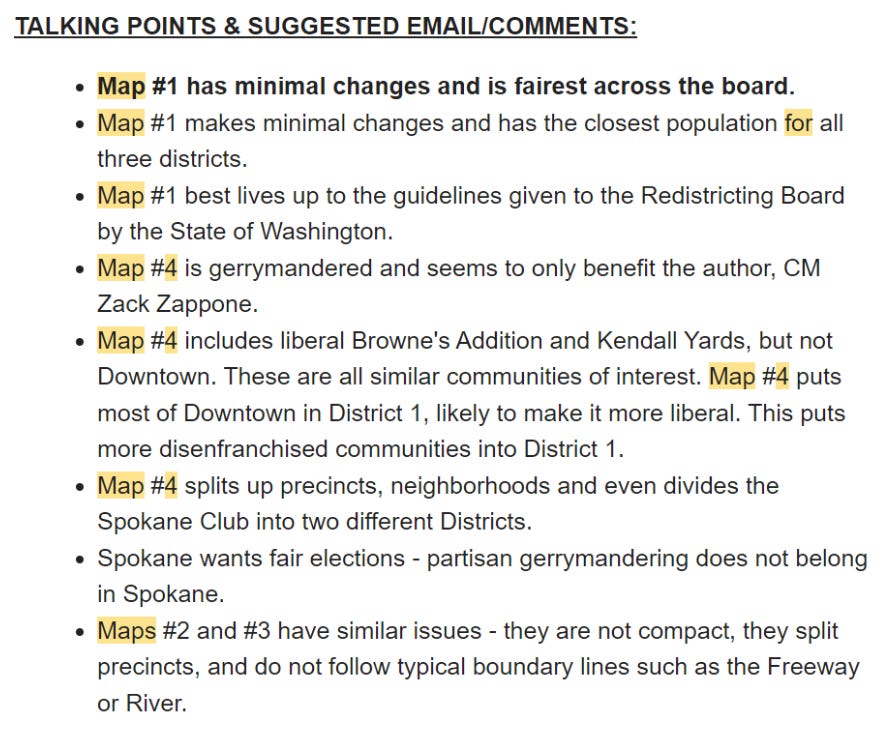How can anyone expect him to manage the office of County Auditor?
| JERRY LECLAIRE OCT 24 |
The job of Spokane County Auditor requires both personal and managerial attention to detail. The Auditor is responsible for Recording, Financial Services, Motor Vehicle Licensing and Elections Divisions of county government. The job of auditor requires leadership and oversight.
Would you knowingly vote for a candidate for the job of Auditor who, on multiple occasions during their campaign, demonstrated their inability to respect deadlines and details? Bob McCaslin, Jr., current (until January) Representative to the Washington State legislature from LD4 (Spokane valley north to Mt. Spokane) is seeking to replace incumbent Spokane County Auditor Vicky Dalton.
Every candidate for every elected position in the State of Washington has their fitness as an administrator tested in the course of their campaign. In Washington State a candidate must follow detailed financial reporting requirements during the course of (and after) their campaign for public office.
Bob McCaslin Jr., Republican candidate for Spokane County Auditor, is falling short on this test of administrative ability. We should notice. Candidates in our state must report on a timely basis the details of their campaign finances to the Washington State Public Disclosure Commission (the “PDC”, at pdc.wa.gov).
Mr. McCaslin, like most candidates for public office in Washington State, hired a campaign treasurer, Sharon Hanek. The relationship between the candidate and their campaign treasurer should be seen as a microcosm of the relationship between the Auditor and the staff of the Auditor’s office.
The rules and regulations around campaign finance reporting to the Public Disclosure Commission in Washington State are complicated, but not nearly as complicated as the rules and regulations under which the office of County Auditor functions.
Still, Mr. McCaslin and his treasurer were consistently unable to follow the campaign reporting rules of the PDC. Here’s a snapshot:

This is part of Case #109883, McCaslin, Bob: Alleged Violations of RCW 42.17A.235 and .240 for failure to timely and accurately file C-3 and C-4 reports (EY22, June22), the details of which can be read under “Rules and Enforcement” at the PDC’s website.
The Public Disclosure Commission’s investigation of Case #109883confirmed the detailed allegations in the complaint (the details are here). However, because the PDC investigation found no intent by the McCaslin campaign to deceive the public, the result was only a warning to Mr. McCaslin, which read in part:
Staff expects you to file all required reports of contributions and expenditures in future years, including surplus funds. The Commission will consider this formal written warning in deciding on further Commission action if there are future violations of PDC laws or rules.
Legal processes like this take time (as we are currently observing on a national scale). The original complaint against the McCaslin campaign was filed electronically on June 22, 2022. The result of the hearing on this complaint were posted on September 20. The warning letter was issued on October 4, only a month before the upcoming November General Election. Nevertheless, the very next C-4 Report, due on October 18, was filed a day late. Obviously, “consider[ing] this formal written warning…if there are future violations” is not going to happen before the November Election.
Voters, especially MAGA voters, are focused on the Elections Division of the Spokane County Auditor’s Office. That is shortsighted. The Auditor’s Office also manages the Recording, Financial Services, and Motor Vehicle Licensing Divisions. Consider what falls under the Financial Services Division:
The Financial Services Division of the Auditor’s Office maintains and controls the County’s financial system to ensure the integrity and accuracy of the County’s financial information, financial reporting, payment of liabilities, and safeguarding of assets. Financial Services also provides financial, accounting, payroll, and accounts payable services to the County’s various departments, agencies and acts as the disbursing officer for smaller taxing districts with the County. To facilitate effective management of these responsibilities, the Division is organized into 3 sections, Financial Services, Accounts Payable and Payroll.
Who in their right mind would choose a right wing politico with a degree in Education over a Certified Public Account with decades of experience to run this Division?
Bob McCaslin Jr. is signaling his lack of fitness for the office of Spokane County Auditor. No sensible employer would hire a man interviewing for a detail oriented job managing forty-two full time employees (with as many as 140 additional temporary employees during election season) who cannot inspire his campaign treasurer to submit campaign finance reports on time. In our case, we the voters are the employer. McCaslin’s application for employment should be soundly rejected. Vote for proven management skills. Vote for Vicky Dalton.
Keep to the high ground,
Jerry
Thanks for reading Indivisible–The High Ground! Subscribe for free to receive new posts and support my work.
If you liked this post from Indivisible–The High Ground, why not share it?

